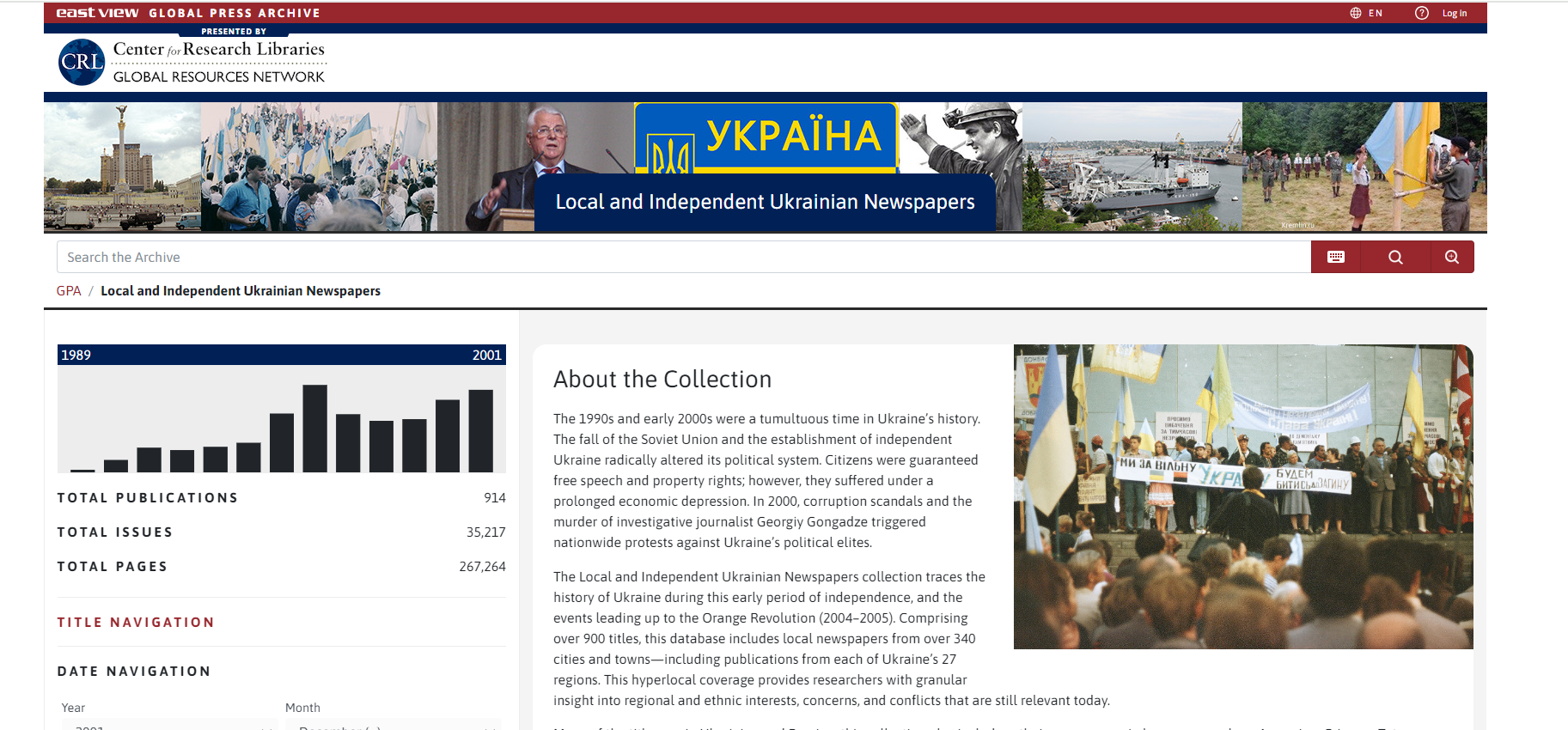Tag: Soviet Union
Local and Independent Ukrainian Newspapers on Global Press Archive Electronically Available
The 1990s and early 2000s marked a turbulent period in Ukraine’s history due to the fall of the Soviet Union and the emergence of an independent Ukraine. Despite gaining free speech and property rights, citizens faced economic hardships. Corruption scandals and the murder of journalist Georgiy Gongadze in 2000 sparked nationwide protests against the political elite. The Local and Independent Ukrainian Newspapers collection covers this era up to the Orange Revolution (2004–2005), offering insights from over 900 newspapers across 340 cities, reflecting regional and ethnic dynamics. The collection includes publications in Ukrainian, Russian, and other languages like Armenian, German, Polish, etc., providing a detailed view of historical events. Access to this database is supported by the Center for Research Libraries and its members.
One can access this collection here.
New Digital Resource: Собрание законов и распоряжений правительства РСФСР и СССР= Collection of laws and orders of the government of the RSFSR and the USSR
Recently in light of Russian invasion of Ukraine, with almost everything Russian being canceled in society at large, I wanted to bring to our readers’ attention a new digital resource on the Collection of laws and orders of the government of the RSFSR and the USSR. The resource is in Russian, and it was created by the Elektronnaia biblioteka istoricheskikh dokumentov (Электронная библиотека исторических документов).
The source provides access to digital copies of the laws and various orders of the Russian Soviet Socialist Republic and Soviet Union. I hope historians of the Soviet Union and the Russian Federation will find this resource of academic interest.
One can search within the text using specific keywords.
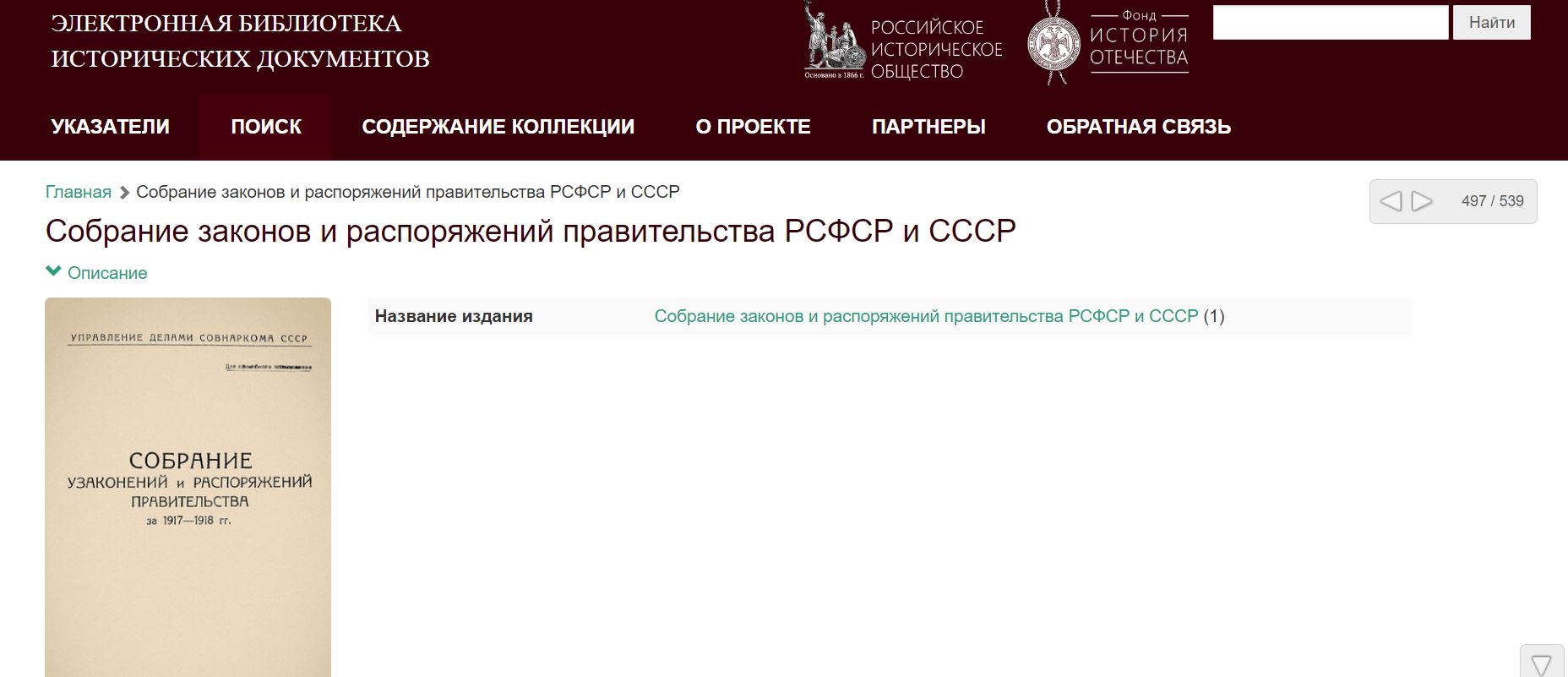
Center for Research Libraries releases Soviet-Era Ukrainian Newspapers Online
Center for Research Libraries in collaboration with the Global Press Archive of East View has released its latest digital collection of select Soviet-Era Ukrainian Newspaper. The collection can be accessed here: https://gpa.eastview.com/crl/seun/ or here
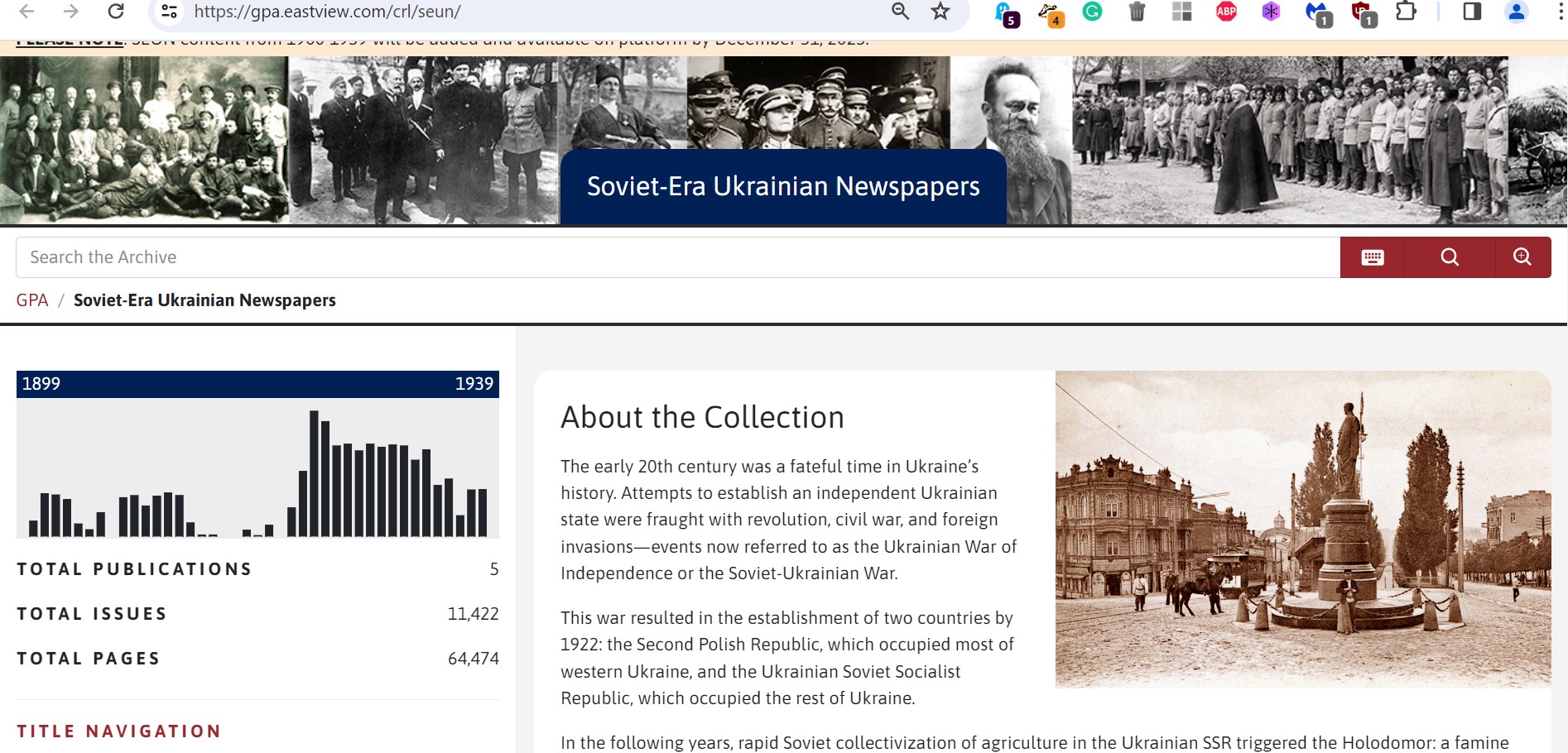
About the collection:
The early 20th century was a crucial time in Ukraine’s history, marked by attempts to establish an independent state, leading to the Ukrainian War of Independence. This conflict resulted in the creation of two countries by 1922: the Second Polish Republic in western Ukraine and the Ukrainian Soviet Socialist Republic in the rest of the country.
Following this, rapid Soviet collectivization in the Ukrainian SSR triggered the Holodomor, a famine that began in 1932 and claimed millions of lives.
The Soviet-Era Ukrainian Newspapers (SEUN) collection, with over 50,000 pages and five titles, documents Ukraine’s history during this turbulent period, including events leading up to WWII. It includes newspapers from Kyiv, Kharkiv, and Lviv, featuring content in both Ukrainian and Russian.
Sovetskii Ekran (Soviet Film) Digital Archive at UC Berkeley Library
The Library has purchased the Digital Archive of a Soviet film magazine: Sovetskii Ekran. The archive provides access to the full-text of journal issues that were published from 1925-1998.
Below is the screenshot of the landing page of the Sovietskii Ekran.

At the time of writing this blog, the digitization of issues was completed through 1970 and the additional digitization was in progress.
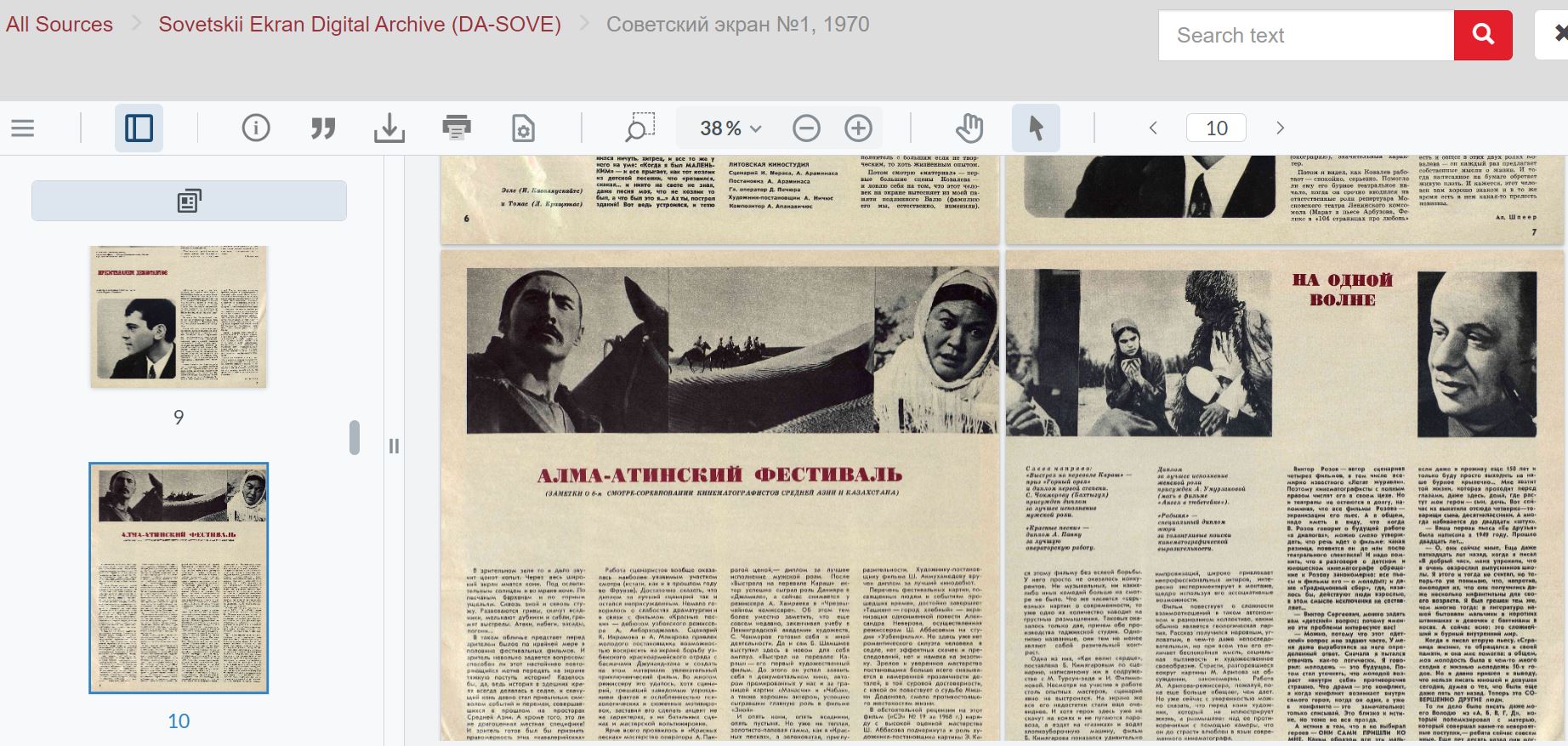
About the journal:
Soviet Screen was a magazine in the USSR that ran from 1925 to 1998 (with a break from 1941 to 1957). It talked about movies, both from the Soviet Union and other countries, cinema history, and had articles critiquing films. They also had reader polls each year to pick the best film, actor, actress, film for children, and music film.
The magazine had different names over the years, like Screen Film Gazeta in 1925, Cinema and Life in 1929–1930, Proletarian Cinema from 1931–1939, and Screen from 1991–1997. Before 1992, it was connected to the Union of Cinematographers of the USSR State Committee for Cinematography and the USSR.
In 1984, they printed 1.9 million copies. In 1991, the editor was Victor Dyomin, and the magazine was published under the title: Screen. It started coming out less often, monthly instead of more frequently. It kept going as Screen Magazine until 1997, then for a few months in 1997-1998, it went back to its old name-Soviet Screen. But it couldn’t survive the financial troubles in 1998 and had to stop publishing (Source: Wikip.).
Library Trial: Znamia Digital Archive (Soviet-era periodical)
At the library, we have set up a thirty-day trial of Znamia Digital Archive through November 18, 2023.
The extensive archive of Znamia (Знамя, Banner), a highly regarded Soviet/Russian “thick journal” (tolstyi zhurnal), covers more than nine decades and is a rich source of intellectual and artistic contributions. This monthly publication has been a vibrant platform for literature, critical analysis, philosophy, and, at times, political commentary.
Originally introduced in January 1931 as LOKAF (Локаф), an acronym for the Literary Association of the Red Army and Navy, the journal officially adopted the name Znamia, which translates to “Banner” in English, in 1933. Throughout its history, Znamia has played a crucial role in presenting the works of renowned authors such as Anna Akhmatova, Alexander Tvardovsky, Yevgeny Yevtushenko, Konstantin Paustovsky, Yuri Kazakov, and Yuri Trifonov.
During the era of Perestroika, starting in 1986, Znamia underwent a significant transformation and became one of Russia’s most widely read literary journals, serving as a herald of the Perestroika movement.
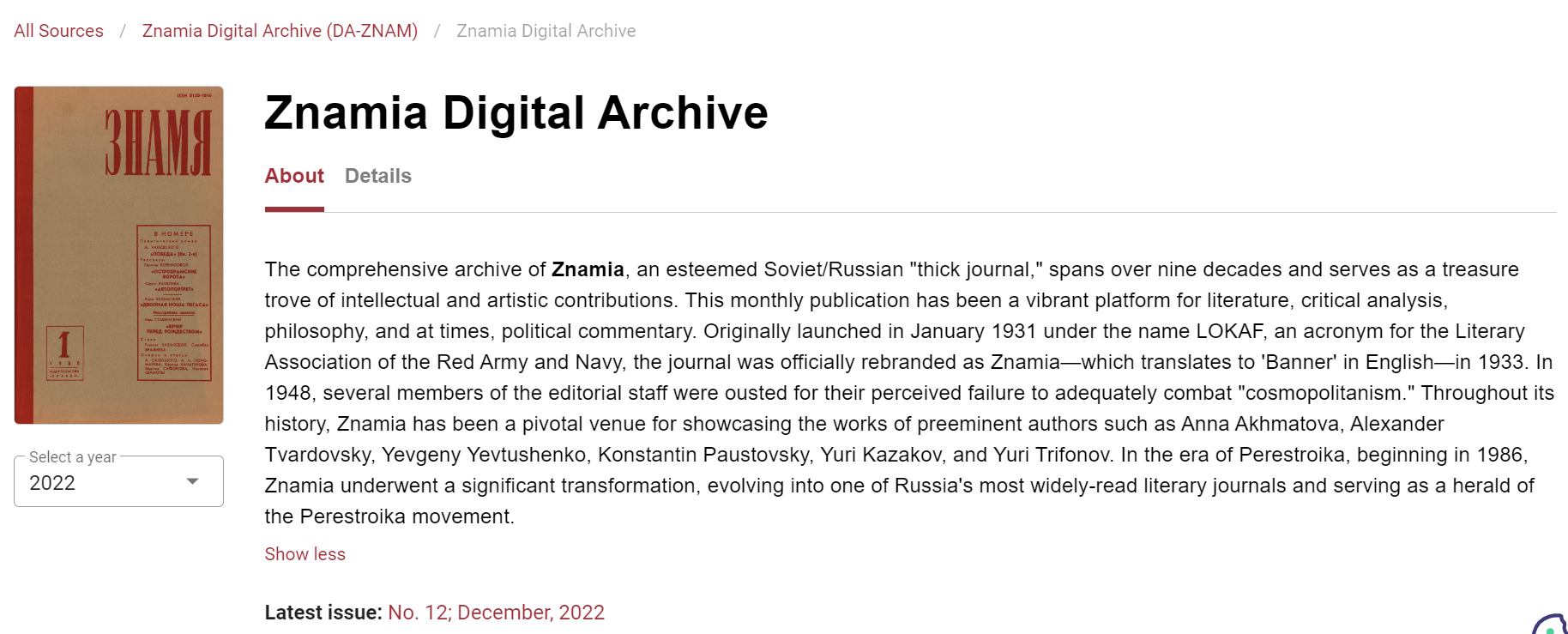
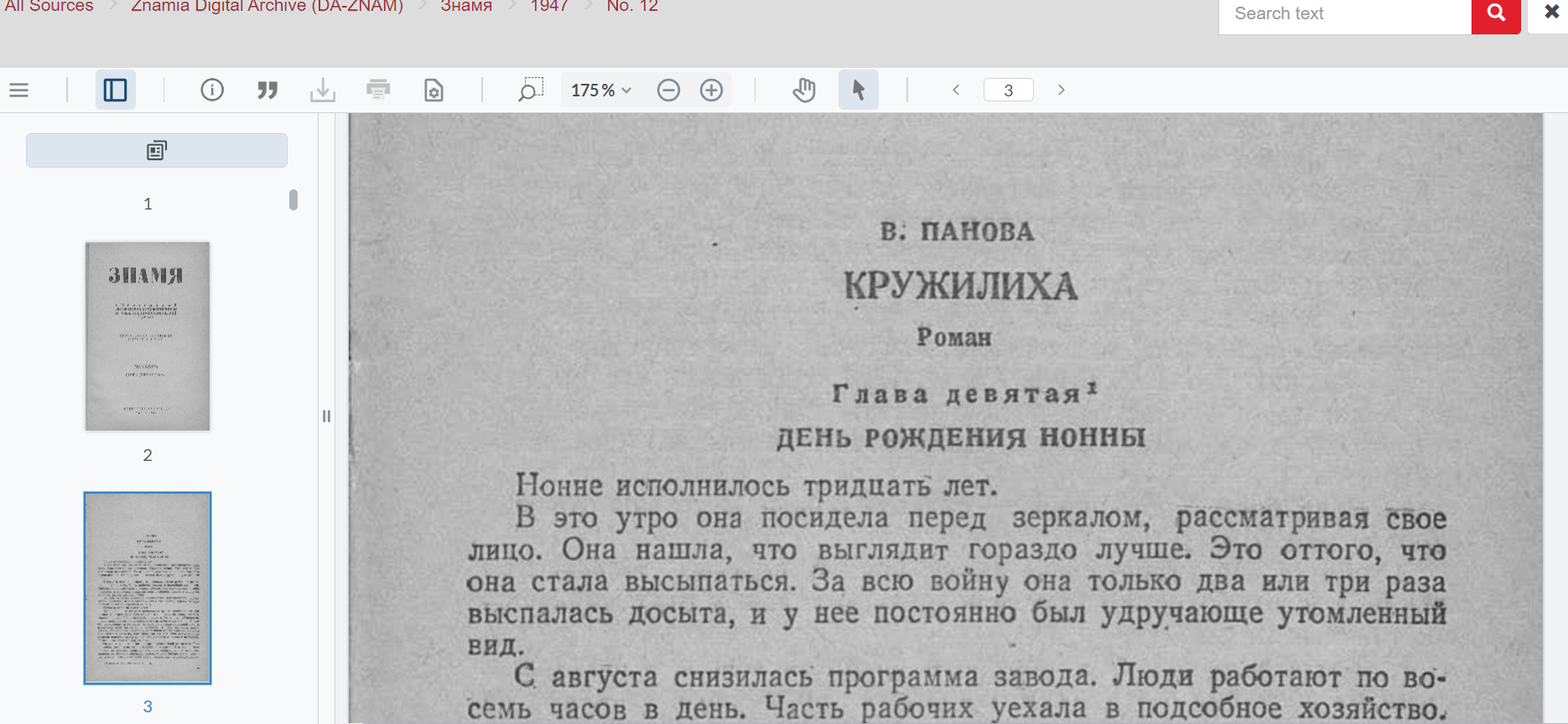
Access Link: https://libproxy.berkeley.edu/login?qurl=https%3A%2F%2Fdlib.eastview.com%2Fbrowse%2Fudb%2F6250
Primary sources: Russian language historical ebook collections
This post highlights some of the Library’s acquisitions of Russian-language historical ebook collections that may have escaped your notice.
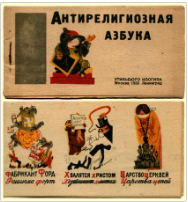 Soviet Anti-Religious Propaganda ebook collection
Soviet Anti-Religious Propaganda ebook collection
East View has digitized a collection of 280 e-books that are most emblematic of Soviet anti-religious fervor. They were published mainly in the 1920s and 1930s on a variety of atheist or anti-religious topics, with titles including Christianity versus Communism, Church versus Democracy, and The Trial of God.
Another collection from East View of 116 ebooks, originally published from 1928 to 1948, relating to the golden age of Soviet Cinema.
An ebook collection of 778 works from Brill Online. It represents works of all Russian literary avant-garde schools, most published betwen 1910-1940. According to the publisher, “the strength of this collection is in its sheer range. It contains many rare and intriguingly obscure books, as well as well-known and critically acclaimed texts, almanacs, periodicals, literary manifests. This makes it a gold mine for art historians and literary scholars alike. Represented in it are more than 30 literary groups without which the history of twentieth-century Russian literature would have been very different. Among the groups included are the Ego-Futurists and Cubo-Futurists, the Imaginists, the Constructivists, the Biocosmists, and the infamous nichevoki – who, in their most radical manifestoes, professed complete abstinence from literary creation.”
Primary Sources: Soviet Woman Digital Archive
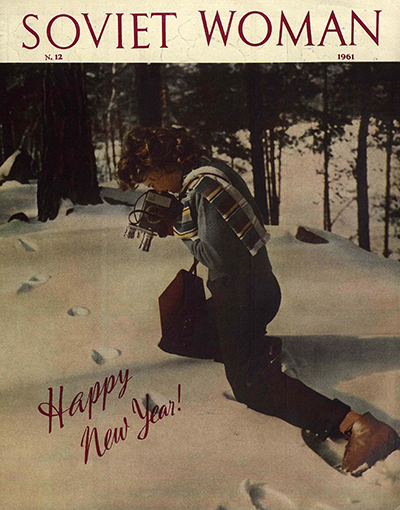 The Library has acquired the Soviet Woman Digital Archive, an online source for the full run of Soviet Woman magazine.
The Library has acquired the Soviet Woman Digital Archive, an online source for the full run of Soviet Woman magazine.
Published initially under the aegis of the Soviet Women’s Anti-Fascist Committee and the Central Council of Trade Unions of the USSR, in the aftermath of WWII in 1945, the Soviet Woman magazine began as a bi-monthly illustrated magazine tasked with countering anti-Soviet propaganda. The magazine introduced Western audiences to the lifestyle of Soviet women, their role in the post-WWII rebuilding of the Soviet economy, and praised their achievements in the arts and the sciences.
Additional Information:
The magazine covered issues dealing with economics, politics, life abroad, life in Soviet republics, women’s fashion, as well as broader issues in culture and the arts. One of its most popular features was the translations of Soviet literary works, making available in English, (and other languages) works of Russian and Soviet writers that were previously unavailable. An important communist propaganda outlet, the magazine continued its run until the collapse of the USSR in 1991.
Trial of Seans Digital Archive (Film Studies Journal) through 11 February 2022
UC Berkeley Library has set up a trial of Seans Digital Archive (1990-2020). Seans is a well-known Russian journal dedicated to Film Studies. The UC Berkeley’s registered students, staff, and faculty can access the digital archive here. The trial will last from 12 January 2022 through 11 February 2022. The vendor description: The Seans digital archive contains all available published issues from 1990, with an additional year’s worth of content added annually. The archive offers scholars the most comprehensive collection available for this title and features full page-level digitization and complete original graphics. The archive has searchable text and is cross-searchable with numerous other East View digital resources.
Each issue of Seans is devoted to a specific theme. Examples of past themes include:
- Based on true events (Основан на реальных событиях)
- Back in the USSR
- Sources of the impossible (Источники невозможного)
- Speak, Memory
- It’s sad (Это печально)
- Everything is going according to plan (Все идет по плану)
- Faust
- Le tour de France
- Russian Cabinet of Curiosities (Русская кунсткамера)
Alternatively, the Seans Digital Archive is also available on the web at no cost here: https://seance.ru/magazine/
However, the archive that is on the web is not cross-searchable with other digital content that Eastview offers.

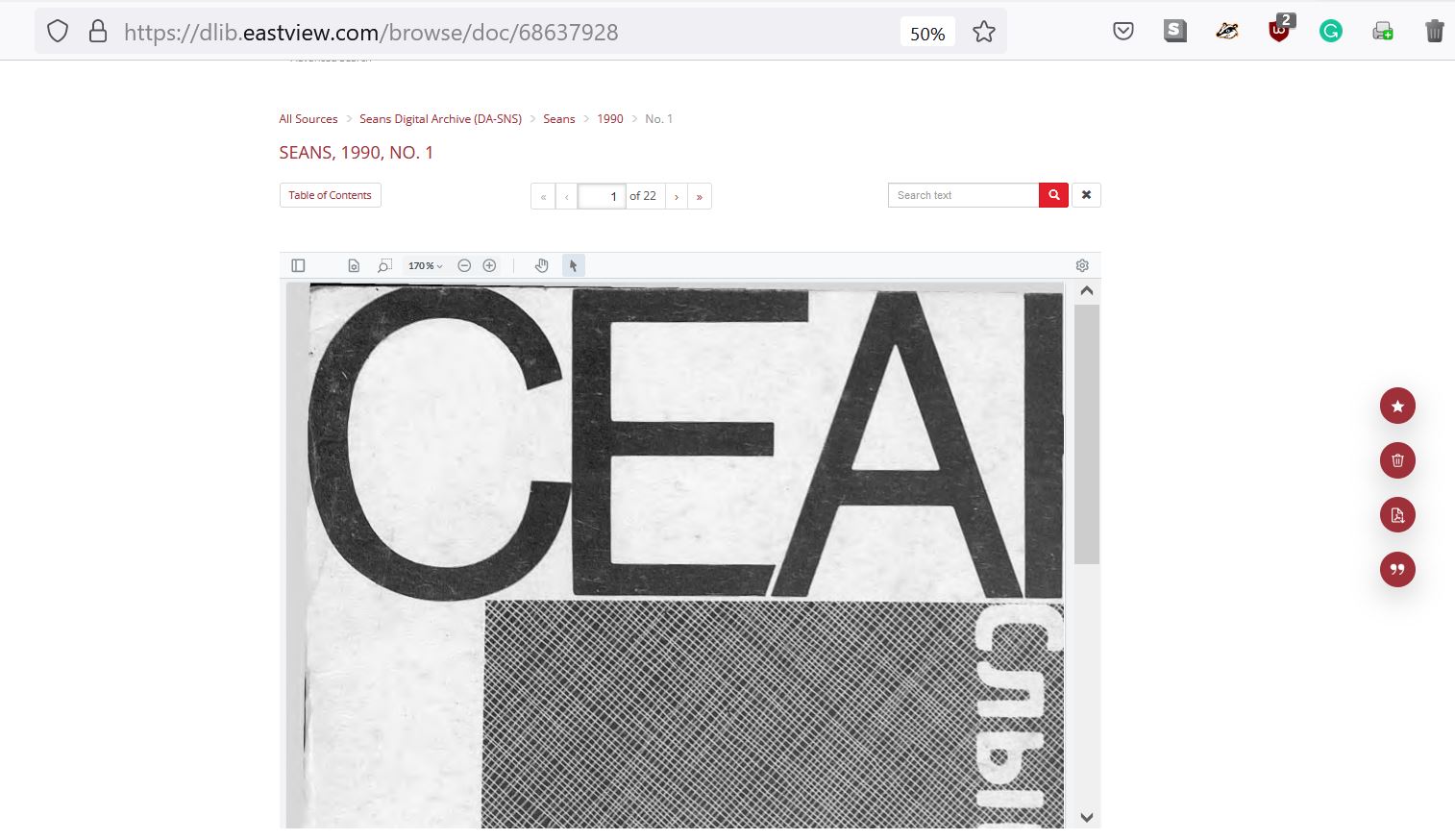
Library Trial of Soviet Woman Digital Archive (25 October 2021 through 24 November 2021).
We have set up a thirty-day trial of the Soviet Woman Digital Archive (1945-1991)
To link to this database during the trial is below:
Published initially under the aegis of the Soviet Women’s Anti-Fascist Committee and the Central Council of Trade Unions of the USSR, in the aftermath of WWII in 1945, the Soviet Woman magazine began as a bi-monthly illustrated magazine tasked with countering anti-Soviet propaganda. The magazine introduced Western audiences to the lifestyle of Soviet women, their role in the post-WWII rebuilding of the Soviet economy, and praised their achievements in the arts and the sciences.
Additional Information:
The magazine covered issues dealing with economics, politics, life abroad, life in Soviet republics, women’s fashion, as well as broader issues in culture and the arts. One of its most popular features was the translations of Soviet literary works, making available in English, (and other languages) works of Russian and Soviet writers that were previously unavailable. An important communist propaganda outlet, the magazine continued its run until the collapse of the USSR in 1991.
Coverage:1945-1991
Vendor: East View
Producer:Правда
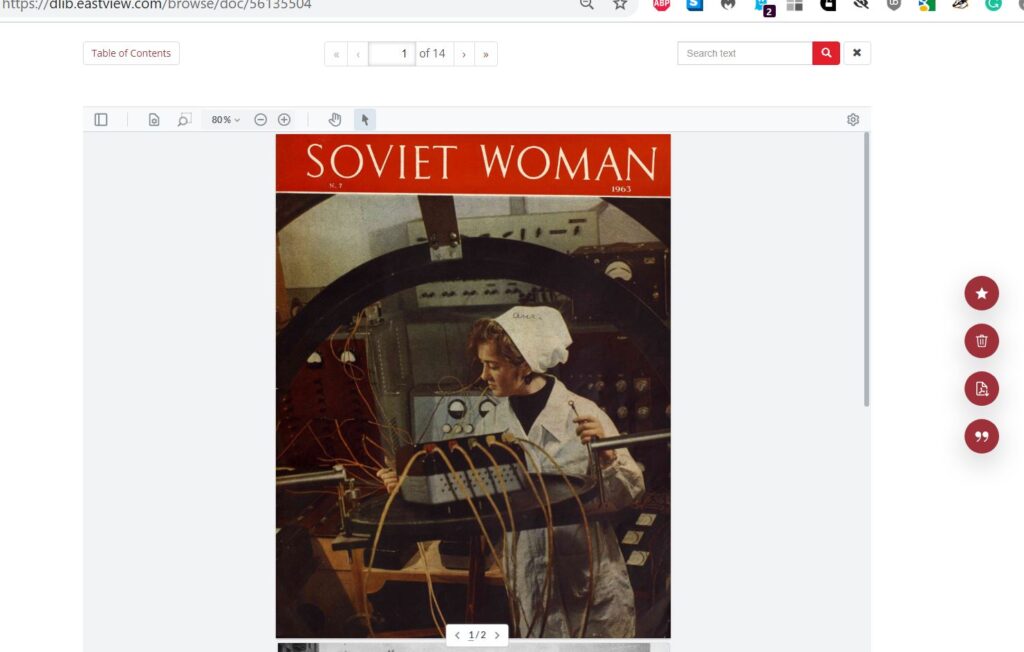
Trial of 30 Dnei Digital Archive
As a courtesy from our vendor East View, I was glad to inform you that we have set up a 30 day trial of a Russian periodical of literary importance- 30 Dnei. Below links provide access information and publisher-provided description.
The trial will end on 29th April 2021.

30 DNEI
Founded in 1925 in Moscow and in continuous print until its closure in 1941, 30 Dnei was an illustrated Soviet literary journal most famous for the serialized publications of such Soviet literary sensations as Il’f and Petrov’s The Twelve Chairs and The Golden Calf. Praised and supported by none other than Maxim Gorky the journal was conceived by its publisher as a platform for the publication of short form literature, both original and translated, and was geared towards the emerging generation of writers and the intelligentsia. Apart from helping launch and shape the literary careers of a slew of Soviet writers the journal was instrumental in introducing acclaimed works of short fiction, essays, and poetry by foreign authors as well. Some of the most important Soviet and foreign writers whose works have appeared on the pages of 30 Dnei were Vasily Grossman, Vladimir Mayakovsky, Boris Pasternak, Ernest Hemingway, Langston Hughes, Paul Valery and others. Falling into disfavor with the central government in later years, with periodical criticisms of the editorial direction of the journal appearing in Pravda and Literaturnaia gazeta, the journal would cease publication soon after Nazi Germany’s invasion of the USSR in June of 1941.
30 Dnei Digital Archive contains the complete run of the popular literary monthly journal and represents an important resource for researchers of Soviet history and literature in its formative period.
